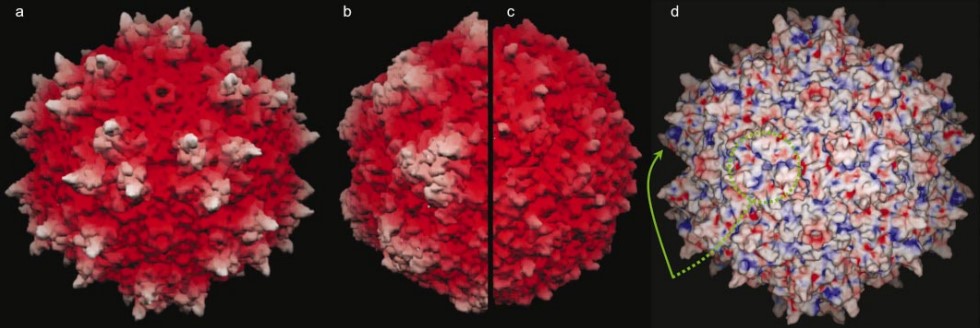Mempro™ Adeno-associated Virus (AAV) for Virus-like Particles (VLPs)
With years of experience in virus-like particles (VLPs) research, Creative Biostructure provides world-leading services of Mempro™ VLPs derived from Adeno-associated virus (AAV). Our experienced scientists are confident in performing various services from VLPs design & production to VLPs characterization of AAV.
VLPs are multiprotein nanostructures or multiprotein formed from viral structural proteins, but don’t contain any viral genomes. VLPs has mehrmals, high density exhibition of viral surface proteins provided conformational viral epitopes which can cause strong T cell and B cell immune responses. On account of the special features of VLPs, they are useful in the progress of vaccines, virus research, therapeutic and lipoparticle technology.
AAV is a small virus which has not known to cause disease so far, its hosts are humans and several other primate species. The immune response caused by AAV is quite mild, and it is obviously lack of pathogenicity. Using AAV for gene therapy vectors not only can infect dividing cells but also quiescent cells, moreover it can stay in an extrachromosomal condition without integrating into the genome of the host cells. With these special features, AAV has become an indeed magnetic candidate for the production of isogenic human disease models, and for inventing viral vectors for gene therapy.
 Figure 1. Surface topology and electrostatics of AAV-2.(PNAS 2002)
Figure 1. Surface topology and electrostatics of AAV-2.(PNAS 2002)
- Genome Structure of Adeno-associated Virus (AAV)
The AAV genome is approximately 4.7 kilobase which is made up of single-stranded deoxyribonucleic acid (ssDNA), either positive- or negative-sensed. There are inverted terminal repeats (ITRs) at two ends of the DNA strand and two open reading frames (ORFs): rep and cap in the genome. The rep ORF consists of four overlapping genes which are needed for the AAV life cycle, while the cap ORF has nucleotide sequences of capsid proteins: VP1, VP2 and VP3, interacting with each other to generate a capsid of an icosahedral symmetry.
- Adeno-associated Virus (AAV) Used for Gene Therapy
Gene therapy researchers is quite interested in wild-type AAV, one of the several features they care most is the virus's apparent lack of pathogenicity. The virus enables to infect non-dividing cells and it can steadily integrate into the host cell genome at a particular site (designated AAVS1) in the human chromosome 19. Due to the feature, it’s more divinable than retroviruses, which arise the threat of a random insertion and of mutagenesis, followed by progress of a cancer sometime. AAV vectors have been put to use in more than 117 clinical trials around the word.
Creative Biostructure can perform high quality Mempro™ VLPs of AAV based on the advanced VLPs platform established for years. Please feel free to contact us for a detailed quote.
References:
Deyle D R, Russell D W. Adeno-associated virus vector integration[J]. Current opinion in molecular therapeutics, 2009, 11(4): 442.
Grieger J C, Samulski R J. Adeno-associated virus as a gene therapy vector: vector development, production and clinical applications[M]//Gene Therapy and Gene Delivery Systems. Springer Berlin Heidelberg, 2005: 119-145.
Maguire A M, Simonelli F, Pierce E A, et al. Safety and efficacy of gene transfer for Leber's congenital amaurosis[J]. New England Journal of Medicine, 2008, 358(21): 2240-2248.